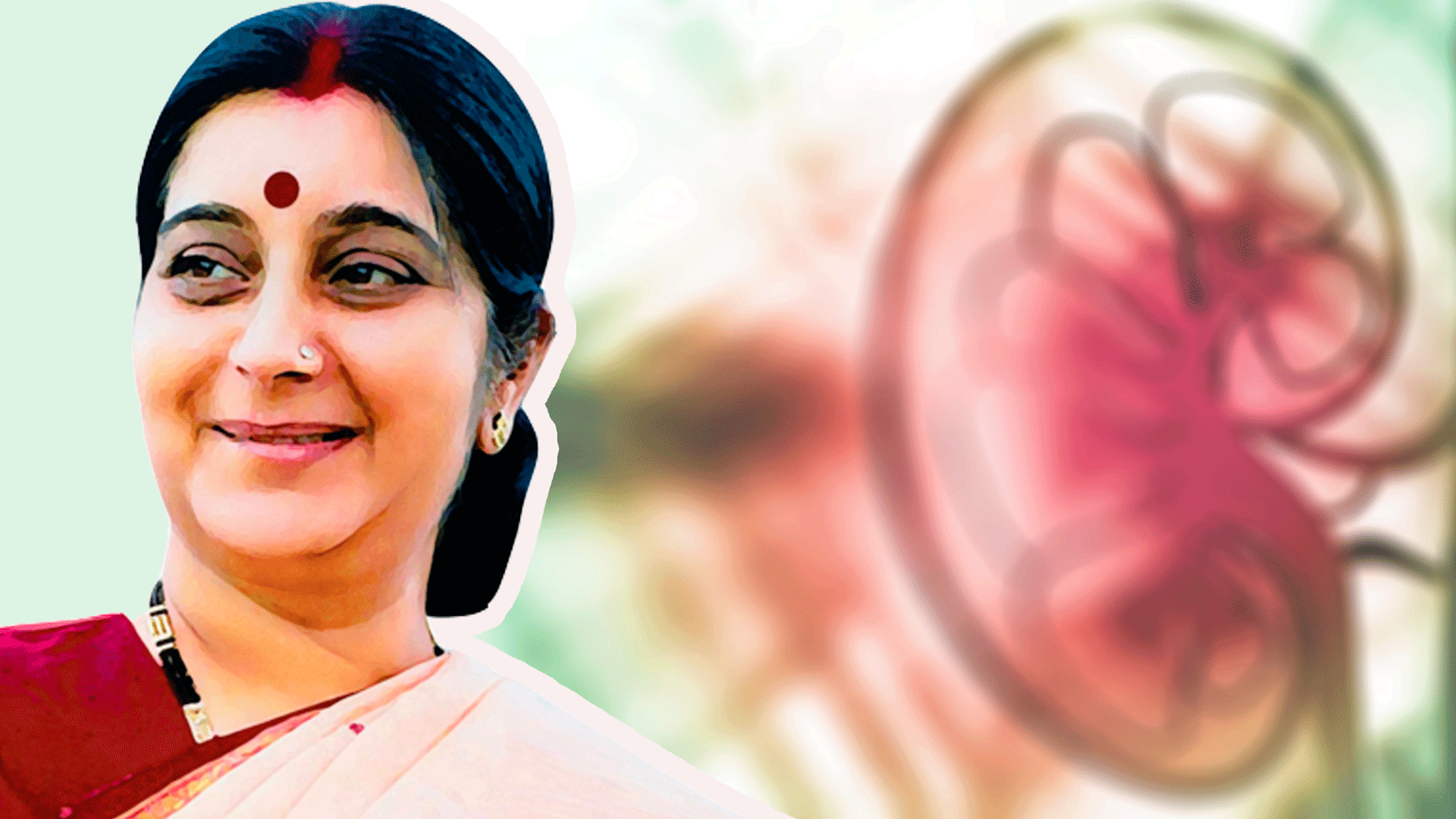Sushma Swaraj To Get Kidney Transplant: 7 Things You Should Know
Kidney transplants aren’t an instant fix after organ failure. Here’s everything you should know about this surgery.

Two decades of diabetes has caused 64-year-old External Affairs minister, Sushma Swaraj’s kidneys to shut down. Admitted in the Capital’s premier medical institute, AIIMS, she will undergo a transplant soon.
According to sources in the hospital, the minister’s creatinine levels, which measure how well the kidneys are functioning, were around 5 mg%; normally it should range from 0.80 mg% to 1.21 mg%. The higher the creatinine levels, the more damaged the kidneys.
So is transplant the last resort for the minister? If you or your relatives are in the same boat, go through these FAQs about kidney transplant.
1. The Organ Donation Gap Is Ghastly In India
Last year around 5 lakh Indians died while waiting for an organ transplant. We have 0.2 donors per million population, besides the acute shortage of organs, one in five patients who needs a transplant is an incompatible match. Clearly Swaraj won’t be spoilt for choice here.
2. Kidney Transplant Is Not Urgent Like Liver or Heart Transplant
In fact to many patients, it is offered as the first line of treatment when kidneys start failing. The alternative is dialysis. It involves getting a tube placed in the abdomen and being tethered to a blood-cleansing machine, three times a week, four debilitating hours at a time.
Related Read: Remarkable Discovery Could Change Kidney Transplants Forever
3. Transplantation versus Dialysis
Dialysis performs the functions that healthy kidneys would ordinarily do – they clean the body’s blood supply but getting tied to a machine for three to four hours, thrice a week isn’t anyone’s idea of a quality life.
The cost is roughly Rs 20,000 a month and people drag on with dialysis only till their name crawls up the transplant list.
Transplants, on the other hand are not risk-free but the benefits outweigh the risks. On an average, kidney transplants add four years of life, according to medical journal JAMA. It is a major surgery, requires round-the-clock aftercare, nearly two-years of regular tests and follow-up procedures and a heavy dose of immune-suppressing drugs for the rest of your life, so that the organ is not rejected by the body.
4. Whose Kidneys Will the Minister Get?
According to the Human Organ Transplantation Act of 1994, Sushma Swaraj will be on a list to get a kidney from a brain dead donor or a close relative - the success rate of living transplants is higher than that done from a cadaver.
In April this year, after scrambling from months, the Union Health Ministry drafted guidelines for cadaver-based guidelines which had a framework to prioritise organ supply. You can read in details about it here.
5. Transplants Don’t Last Forever
A transplanted organ doesn’t last forever - 10% people die after a kidney transplant after the first year, 17% by the end of the third year. Even if you are going strong, organs tend to ‘wear out’ and will have to be replaced by new ones.
Also Read: Kidney Patient? Read How the New Transplant Policy Will Affect You
6. A Transplanted Organ Can Carry a Hidden Disease
Infectious diseases can be bacterial infections, hepatitis B and C, parasitic illness and in very unfortunate and rare cases, cancer and HIV as well.
Also Read: Organ Donation Gap: Less than 1% Indians Donate Organs
7. The Cost Of Transplant Is Huge, Not For a Sitting Minister Though
At a private hospital, for an ordinary patient the cost of a kidney transplant can be up to rupees eight lakhs, after-care not included.
Post-surgery, Swaraj can actively get back to office within a month or two.
But remember that half a million Indians die on the wait-list of an organ transplant - there’s a dire donor crisis. If you are a healthy individual, registering to donate an organ takes lesser time than to make Maggi noodles, and it’s the nicest, kindest thing you’ll ever do.
Also Read: Kidneys For Sale: The Great Indian Scam
(At The Quint, we are answerable only to our audience. Play an active role in shaping our journalism by becoming a member. Because the truth is worth it.)